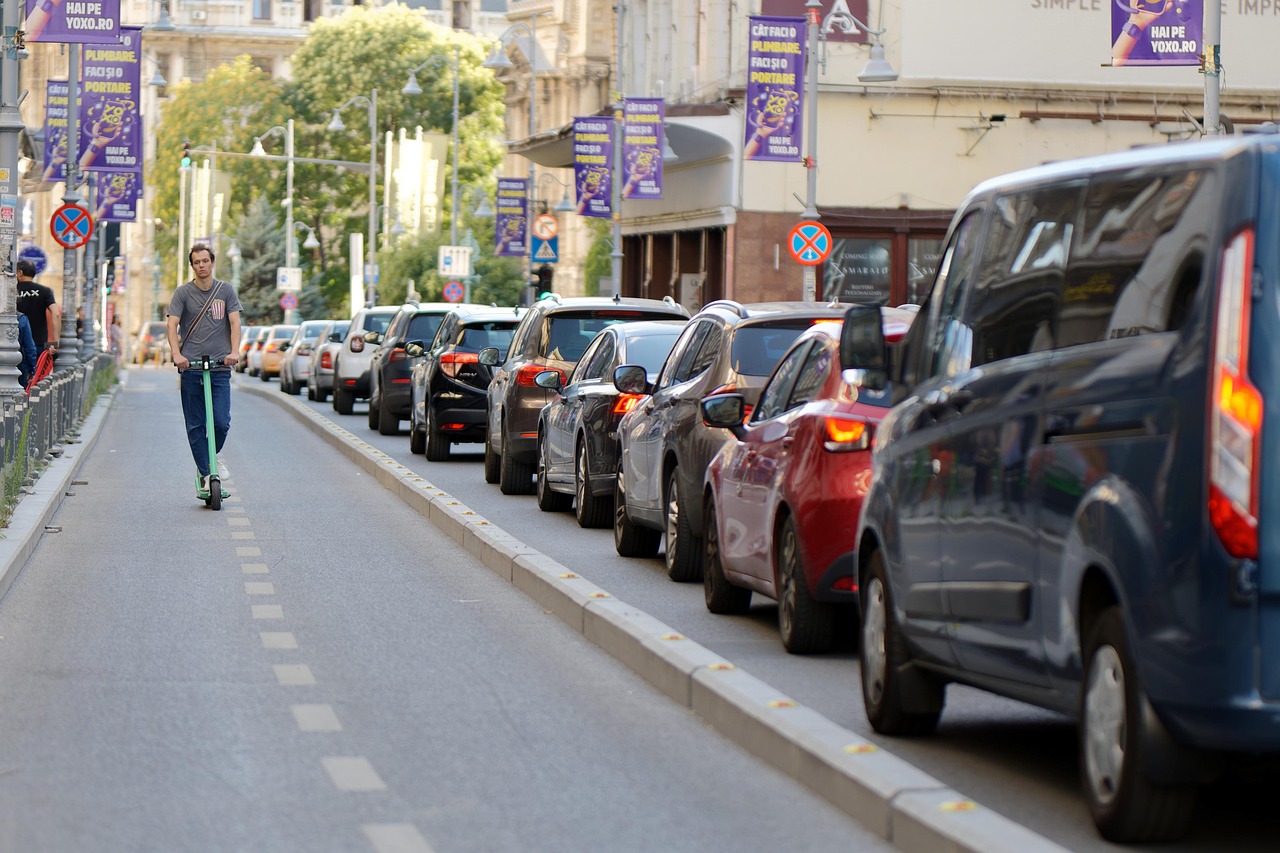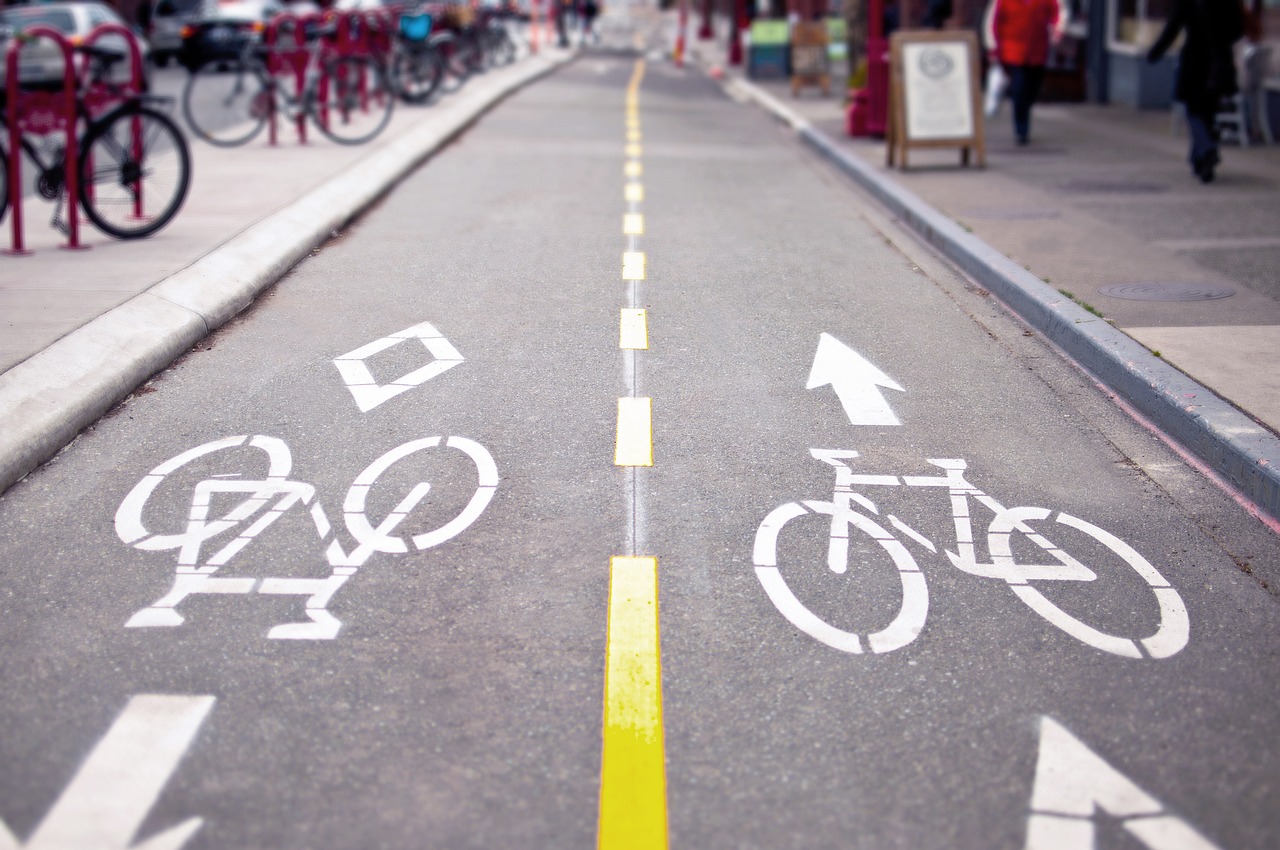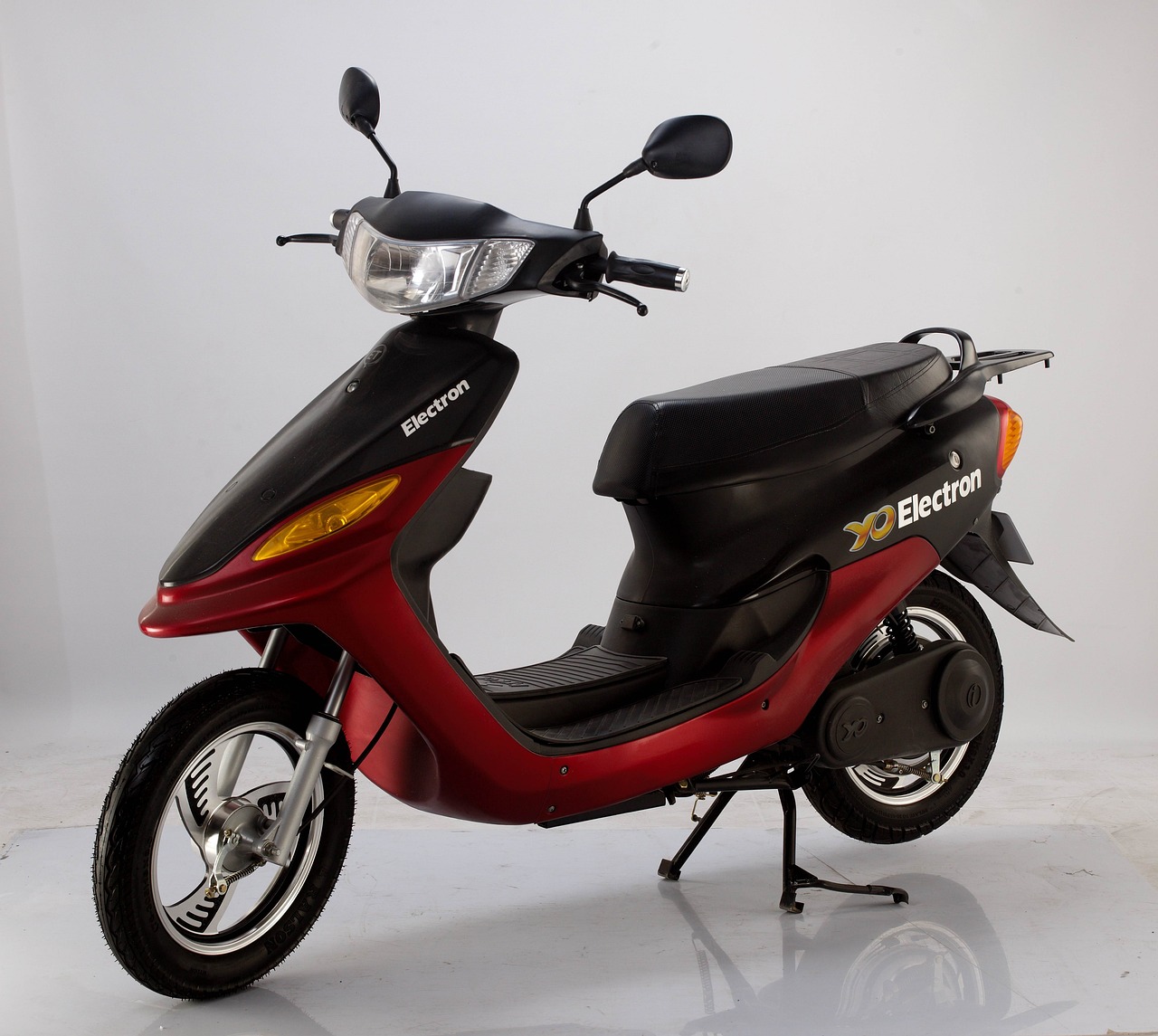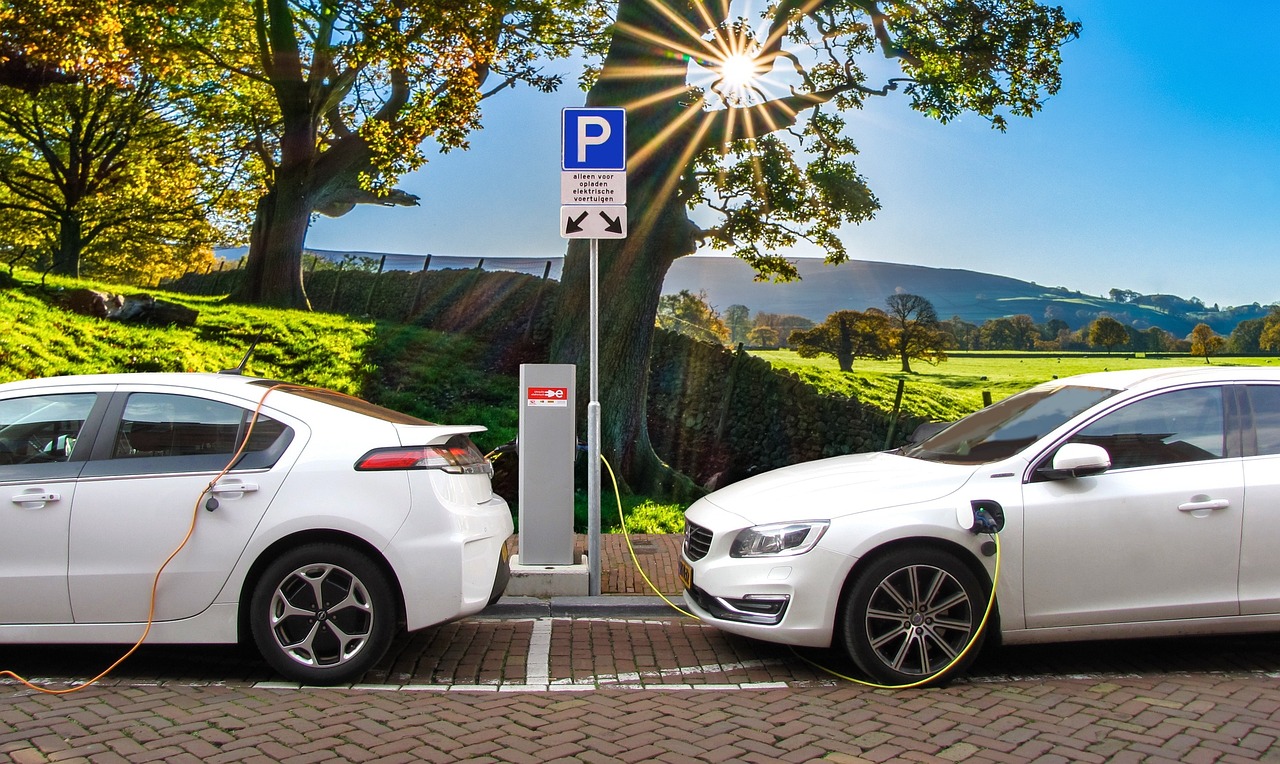This article provides essential tips and guidelines for riding an electric bike safely in urban environments, ensuring a secure and enjoyable experience amidst busy city traffic.
Understanding Electric Bikes
Electric bikes, commonly known as e-bikes, merge the traditional cycling experience with electric propulsion. Understanding their mechanics, such as motor types and battery capacity, is crucial to navigating city traffic effectively.
Choosing the Right E-Bike
Selecting the appropriate electric bike model is vital for both comfort and safety. Key considerations include:
- Motor Power: Higher wattage provides better acceleration.
- Battery Life: Longer ranges are essential for city commuting.
- Frame Size: A proper fit enhances control and comfort.
Essential Safety Gear
Wearing the right safety gear significantly reduces the risk of injury. Essential items include:
- Helmets: Always wear a certified helmet.
- Reflective Clothing: Increases visibility in low-light conditions.
- Lights: Front and rear lights are crucial for night riding.
Traffic Laws and Regulations
Familiarizing yourself with local traffic laws regarding e-bikes is crucial. Different cities have varying regulations, and understanding them ensures compliance and safety while riding.
Planning Your Route
Strategically planning your route can enhance safety. Opt for bike lanes, quieter streets, and less congested areas to minimize interactions with motor vehicles.
Staying Visible to Drivers
Visibility is key to safety. Utilize lights, wear bright clothing, and make eye contact with drivers to ensure they see you, especially in low-light conditions.
Maintaining Your E-Bike
Regular maintenance of your electric bike ensures optimal performance and safety. Check brakes, tires, and battery health before each ride to prevent mechanical failures.
Handling Traffic Situations
Navigating through traffic requires skill and awareness. Learn techniques for merging, turning, and stopping safely to handle various traffic scenarios effectively.
Dealing with Weather Conditions
Weather can impact riding conditions significantly. Understanding how to ride safely in rain, wind, or snow is essential for maintaining control and safety.
Riding with Other Cyclists
When sharing the road with other cyclists, communication and coordination are vital. Use hand signals and maintain a safe distance to avoid collisions.
Emergency Preparedness
Being prepared for emergencies can save lives. Know basic first-aid procedures and carry a repair kit for quick fixes in case of breakdowns or accidents.
Conclusion: Embracing Safe E-Biking Practices
By following these guidelines, riders can enjoy the benefits of electric bikes while ensuring their safety and the safety of others in busy city traffic.

Understanding Electric Bikes
Electric bikes, commonly referred to as e-bikes, represent a remarkable fusion of traditional cycling and modern technology. By incorporating electric propulsion, these bikes offer a unique riding experience that enhances convenience and efficiency. Understanding the mechanics and features of e-bikes is essential for anyone looking to navigate busy city traffic safely.
At the core of every e-bike is a motor that provides assistance to the rider. This motor can vary in power, typically ranging from 250W to 750W, affecting speed and the ease of climbing hills. The battery is another critical component, determining how far you can travel on a single charge. Most e-bikes come equipped with lithium-ion batteries, which are lightweight and have a long lifespan. Riders should consider the battery’s capacity, usually measured in amp-hours (Ah), to ensure it meets their commuting needs.
Another important aspect is the frame design. E-bikes are available in various styles, including step-through and mountain bike designs, catering to different preferences and riding conditions. Comfort is crucial, especially for urban commuting, where riders may encounter uneven surfaces and long distances.
Understanding the pedal-assist feature is also vital. This feature allows riders to choose how much assistance they receive from the motor, enabling a more customized riding experience. Riders can adjust the level of assistance based on their fitness level and the terrain, making e-bikes accessible to a broader audience.
Finally, it is essential to be aware of the regulations surrounding e-bikes in your area. Different regions have specific laws regarding speed limits, where e-bikes can be ridden, and whether a license is required. Familiarizing yourself with these regulations ensures a safer riding experience.
In summary, understanding the mechanics and features of electric bikes is crucial for safe riding in city traffic. By recognizing the components that make up an e-bike, riders can make informed decisions that enhance their safety and enjoyment on the road.
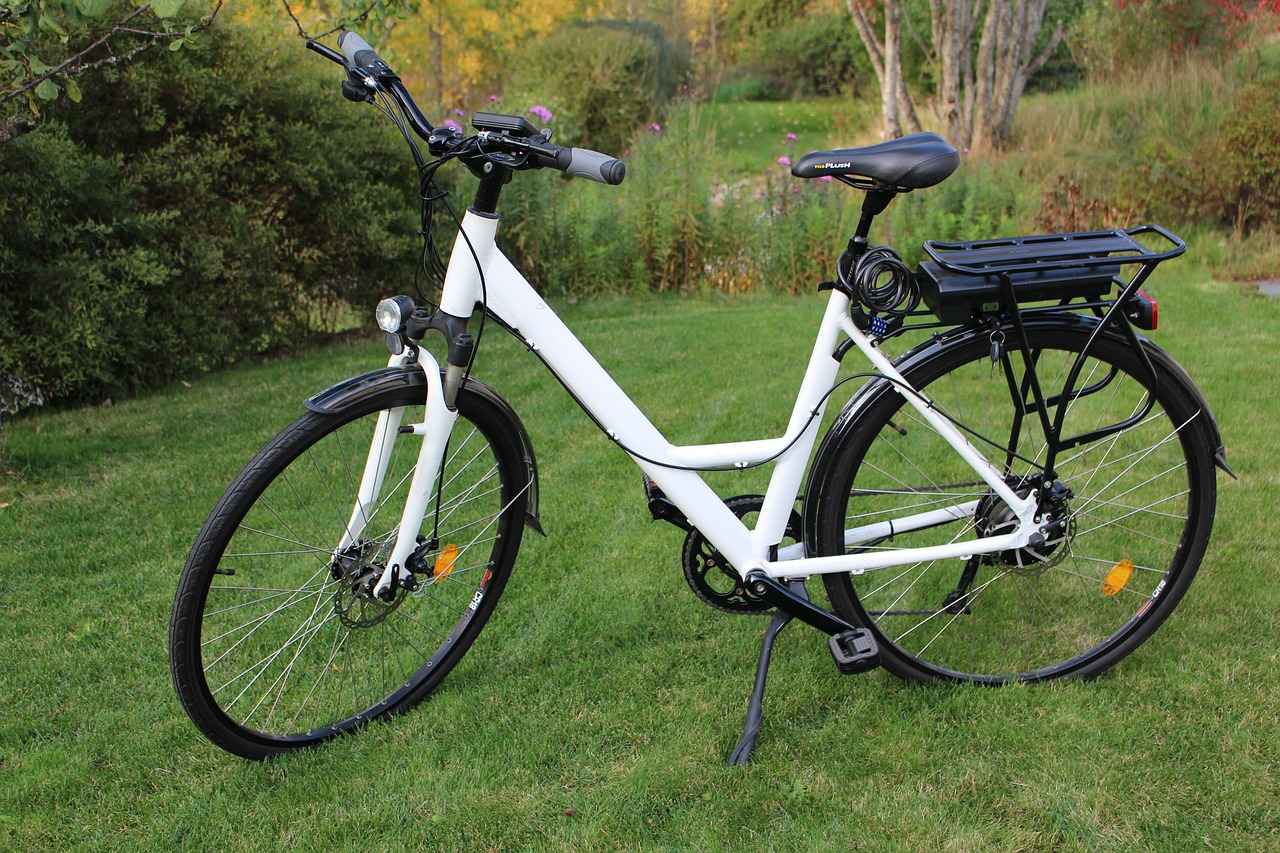
Choosing the Right E-Bike
is a crucial step for anyone looking to enhance their urban commuting experience. With the growing popularity of electric bikes, it’s essential to understand the various factors that contribute to a safe and comfortable ride. Here are some key considerations to help you make the best choice.
- Motor Power: The power of the motor significantly influences your riding experience. For urban riding, a motor with a power output between 250W to 750W is generally ideal. This range provides enough assistance to tackle hills and maintain speed in traffic.
- Battery Life: Battery capacity is another critical factor. Look for models with a battery range that suits your daily commute. A battery that lasts at least 30-50 miles is recommended for urban riders, ensuring you won’t run out of power during your journey.
- Frame Size: A properly sized frame enhances comfort and control. When selecting an e-bike, consider your height and inseam length. Most manufacturers provide size charts to help you find the perfect fit, allowing for better maneuverability in busy city environments.
- Weight: The weight of the e-bike affects how easy it is to handle, especially when navigating through traffic or carrying it up stairs. Opt for a lightweight model if you plan to transport your bike frequently.
- Braking System: Safety should be your top priority. Ensure the e-bike comes equipped with reliable brakes, such as hydraulic disc brakes, which provide better stopping power in various weather conditions.
In conclusion, selecting the right electric bike involves careful consideration of motor power, battery life, frame size, weight, and braking systems. By assessing these factors, you can find an e-bike that not only meets your commuting needs but also enhances your overall riding experience in the urban landscape.

Essential Safety Gear
When navigating busy city streets on an electric bike, wearing the right safety gear is crucial for minimizing the risk of injury. The urban environment presents unique challenges, and equipping yourself with the necessary protective equipment can significantly enhance your safety.
- Helmets: A properly fitted helmet is one of the most important pieces of safety gear. It protects your head in case of falls or collisions. Ensure that your helmet meets safety standards and fits snugly without obstructing your vision.
- Reflective Clothing: Wearing bright or reflective clothing increases your visibility, especially during low-light conditions such as early mornings or evenings. This makes it easier for drivers and pedestrians to see you, reducing the likelihood of accidents.
- Lights: Front and rear lights are essential for riding in traffic. A white front light illuminates your path, while a red rear light signals your presence to vehicles behind you. Consider using flashing lights to enhance visibility even further.
- Gloves: Protective gloves not only provide grip but also protect your hands in case of a fall. Additionally, they can keep your hands warm in cooler weather, allowing for better control of the bike.
- Protective Eyewear: Sunglasses or clear goggles protect your eyes from debris, wind, and UV rays. Good visibility is vital for safe riding, and protecting your eyes can help maintain focus on the road.
Investing in quality safety gear is not just about compliance; it’s about ensuring your well-being while enjoying the ride. Remember, the right gear can make a significant difference, providing peace of mind as you navigate through the hustle and bustle of city traffic.
In conclusion, prioritizing safety by wearing appropriate gear allows you to ride confidently and responsibly. Always assess your equipment before heading out, and make any necessary adjustments to ensure a safe journey.

Traffic Laws and Regulations
Understanding local traffic laws is essential for anyone riding an electric bike. As e-bikes become increasingly popular in urban environments, it is vital to recognize that regulations can vary significantly from one city to another. Familiarizing yourself with these laws not only helps ensure compliance but also enhances your safety while navigating busy streets.
Many cities classify e-bikes into different categories based on their speed and power, which can affect where you are allowed to ride. For example, some places may allow e-bikes on bike paths while others may restrict them to roadways. Knowing the specific rules that apply to your area can prevent unnecessary fines and enhance your overall riding experience.
In addition to speed limits and designated riding areas, there are often regulations concerning the use of safety equipment. Many jurisdictions require riders to wear helmets, and some may mandate the use of lights or reflectors during low visibility conditions. Adhering to these safety regulations not only protects you but also contributes to a safer environment for all road users.
Furthermore, understanding traffic signals and right-of-way rules is critical. E-bike riders must behave like other vehicles in traffic, which means stopping at red lights, yielding to pedestrians, and using hand signals when turning. Being aware of these rules can help you navigate intersections and busy roads more confidently.
To stay updated on local traffic laws, consider visiting your city’s transportation website or local cycling advocacy groups. Engaging with these resources can provide valuable insights and updates on any changes to regulations. In conclusion, being informed about traffic laws and regulations is a key component of safe and responsible e-bike riding.

Planning Your Route
is a critical aspect of ensuring a safe and enjoyable ride on your electric bike, especially in bustling urban environments. By taking the time to strategically choose your path, you can significantly reduce the risks associated with riding in traffic. Here are some key considerations to keep in mind:
- Utilize Dedicated Bike Lanes: Whenever possible, opt for bike lanes that are specifically designed for cyclists. These lanes provide a safer space away from motor vehicles, allowing you to ride with more confidence.
- Avoid High-Traffic Areas: Plan your route to steer clear of congested streets. Quieter roads not only reduce the likelihood of accidents but also offer a more pleasant riding experience.
- Familiarize Yourself with Your Area: Knowing your neighborhood can help you identify safe routes. Use mapping tools or local cycling apps to explore and save routes that prioritize safety.
- Consider the Time of Day: Traffic patterns can vary significantly throughout the day. Riding during off-peak hours can help you avoid heavy congestion and make your journey safer.
- Be Aware of Road Conditions: Pay attention to the surface of the roads you plan to ride on. Uneven pavement or construction zones can pose hazards, so it’s wise to choose smoother paths whenever possible.
- Stay Updated on Local Events: Community events or construction work can impact traffic flow. Keep an eye on local news or community boards to avoid unexpected obstacles.
By taking these steps to plan your route effectively, you can enhance your safety and overall riding experience. Always remember that a well-thought-out path not only protects you but also contributes to a more harmonious coexistence with other road users.

Staying Visible to Drivers
When navigating busy city streets on an electric bike, visibility is paramount for ensuring your safety. The bustling environment filled with vehicles, pedestrians, and cyclists makes it essential to take proactive measures to be seen. Here are some effective strategies to enhance your visibility:
- Utilize Lights: Equip your e-bike with front and rear lights. Bright white lights in the front and red lights in the back significantly increase your visibility, especially during dusk or nighttime riding.
- Wear Bright Clothing: Choose high-visibility clothing such as neon colors or reflective materials. This attire is designed to catch the eye of drivers and other road users, making it easier for them to spot you.
- Make Eye Contact: Whenever possible, make eye contact with drivers at intersections or when they are about to turn. This simple act can confirm that they see you and are aware of your presence.
- Use Reflective Gear: Consider wearing a reflective vest or accessories, especially in low-light conditions. These items enhance your visibility and can be crucial in preventing accidents.
- Stay Alert to Surroundings: Always be aware of your environment. Scan the road for potential hazards and be cautious of blind spots where drivers may not see you.
In addition to these measures, it is advisable to ride predictably and signal your intentions clearly. Use hand signals to indicate turns and stops, allowing drivers to anticipate your movements. By incorporating these practices into your riding routine, you can significantly reduce the risk of accidents and ensure a safer riding experience.
Conclusion: Prioritizing visibility while riding an electric bike is crucial for your safety. By utilizing lights, wearing bright clothing, and maintaining awareness of your surroundings, you can navigate urban traffic more securely and confidently.

Maintaining Your E-Bike
Regular maintenance of your electric bike is essential for ensuring both optimal performance and safety. By taking the time to check crucial components before each ride, you can significantly reduce the risk of mechanical failures and enhance your overall riding experience.
Here are some key areas to focus on during your maintenance routine:
- Brakes: Inspect your brakes regularly. Ensure that they are functioning properly and that the pads are not worn down. A quick test squeeze of the brake levers can help you gauge their responsiveness.
- Tires: Check the tire pressure and tread condition. Properly inflated tires improve handling and reduce the chances of flats. Look for any signs of wear or damage, and replace tires as needed.
- Battery Health: Monitor your battery’s health by checking its charge level and ensuring that connections are clean and secure. A well-maintained battery not only extends your ride time but also enhances the overall efficiency of your e-bike.
In addition to these checks, consider performing a more comprehensive inspection periodically:
1. Clean the chain and gears to ensure smooth operation.2. Lubricate moving parts to prevent rust and wear.3. Check electrical connections for any signs of corrosion.4. Inspect the frame for any structural damage.
By incorporating these practices into your routine, you can enjoy a safer and more reliable ride. Remember, investing time in maintenance not only extends the life of your e-bike but also enhances your safety on the road.
Ultimately, a well-maintained electric bike will provide you with a more enjoyable and worry-free riding experience. Stay proactive about your e-bike’s upkeep to ensure it remains in top condition.

Handling Traffic Situations
Handling traffic situations while riding an electric bike is a crucial skill that every cyclist must master. As urban environments become increasingly congested, understanding how to navigate through traffic safely is essential for both your safety and that of other road users. Here are some effective techniques to enhance your riding skills in various traffic scenarios.
- Merging into Traffic: When merging into traffic, always check your surroundings. Use your mirrors and turn your head to ensure that there are no vehicles in your blind spots. Signal your intentions clearly with hand gestures to inform drivers of your next move.
- Making Turns: Approach intersections with caution. Slow down and look for oncoming traffic or pedestrians. Use hand signals to indicate your turn, and always yield to others when necessary. Remember to check both ways before proceeding.
- Stopping Safely: When coming to a stop, gradually reduce your speed. Use both brakes evenly to maintain control. If you need to stop at a red light or stop sign, position yourself in a visible area where drivers can see you.
- Anticipating Driver Behavior: Always be aware of the actions of drivers around you. Look for signs of distraction or impatience, and be prepared to react accordingly. If a vehicle appears to be turning or changing lanes, give them plenty of space.
- Using Bike Lanes: Whenever possible, utilize designated bike lanes. These lanes are designed to provide a safer space for cyclists, reducing the risk of accidents with motor vehicles.
By honing these skills, you can navigate through busy traffic scenarios with confidence. Remember that awareness and communication are key components of safe riding. Always be prepared for the unexpected, and prioritize safety at all times.

Dealing with Weather Conditions
Weather can significantly affect riding conditions, especially for electric bike enthusiasts navigating busy city streets. Understanding how to adapt your riding style to various weather scenarios is crucial for maintaining control and ensuring safety.
- Rain: Riding in the rain can reduce traction and visibility. To ride safely, ensure your tires are suitable for wet conditions, and maintain a slower speed to avoid skidding. Use fenders to keep water splashes at bay and wear waterproof gear to stay dry.
- Wind: Strong winds can affect your balance and steering. When riding in windy conditions, keep a firm grip on the handlebars and lean slightly into the wind to maintain stability. Avoid sudden movements and be cautious of gusts that may push you off course.
- Snow and Ice: Riding in snowy or icy conditions poses the highest risk. If possible, avoid riding altogether. If you must ride, use tires designed for winter conditions and reduce your speed significantly. Make sure to brake earlier than usual, as stopping distances will be longer on slippery surfaces.
Additionally, always check the weather forecast before heading out. Being informed about upcoming conditions allows you to prepare adequately, whether it means dressing appropriately or choosing a different route. Carrying a small emergency kit can also be beneficial, as it equips you to handle unexpected weather changes.
In conclusion, being aware of how weather impacts your ride is essential for safe electric biking. By adapting your riding techniques and preparing for various conditions, you can enjoy a safer experience while navigating the urban landscape.

Riding with Other Cyclists
When navigating the bustling streets on an electric bike, effective communication and coordination with fellow cyclists are essential for maintaining safety. Given the unpredictable nature of urban cycling, it’s crucial to adopt practices that minimize the risk of accidents and ensure a smooth ride for everyone involved.
Hand Signals are a fundamental aspect of cycling etiquette. These visual cues not only inform others of your intentions but also enhance overall safety. For instance:
- Left Turn: Extend your left arm straight out to signal a left turn.
- Right Turn: Bend your left arm at a 90-degree angle, pointing upwards to indicate a right turn.
- Stopping: Extend your left arm downward to signal that you are slowing down or stopping.
In addition to using hand signals, maintaining a safe distance from other cyclists is paramount. This buffer zone allows for unexpected movements and prevents collisions. A good rule of thumb is to keep at least one bike length between you and the cyclist ahead, which provides ample space to react to sudden stops or changes in direction.
Moreover, it’s important to stay aware of your surroundings. Regularly glance over your shoulder to monitor the position of other cyclists and vehicles. This awareness can help you anticipate potential hazards and make informed decisions while riding.
In crowded environments, consider riding in a single file formation, especially on narrow paths. This arrangement not only enhances visibility but also allows for smoother navigation through tight spaces.
Lastly, fostering a sense of community among cyclists can significantly improve the overall riding experience. A friendly wave or nod can go a long way in building camaraderie and encouraging safer practices among fellow riders.
By implementing these strategies, cyclists can enhance their safety and enjoyment while sharing the road, contributing to a more harmonious cycling environment for all.

Emergency Preparedness
is an essential aspect of ensuring safety while riding an electric bike. Being equipped and ready for unexpected situations can significantly reduce risks and potentially save lives. Here are some key components to consider for effective emergency preparedness:
- Understand Basic First-Aid Procedures: Familiarizing yourself with basic first-aid techniques can be invaluable. This includes knowing how to treat minor injuries like cuts, scrapes, and bruises. Additionally, being trained in CPR and how to handle more serious injuries can make a difference in critical situations.
- Carry a Repair Kit: Having a well-stocked repair kit is crucial for addressing bike issues on the go. Essential items should include tire levers, a spare tube, a multi-tool, and a pump. Being able to quickly fix a flat tire or make minor adjustments can prevent you from being stranded.
- Emergency Contact Information: Always keep emergency contact information easily accessible. This can be a physical card in your wallet or a note on your phone. In case of an accident, having someone who can be reached quickly can provide peace of mind.
- Know Your Route: Before heading out, familiarize yourself with your route. Knowing where hospitals, bike shops, and safe zones are located can be beneficial in case of emergencies.
- Practice Safe Riding Techniques: Regularly practicing safe riding techniques can help you react appropriately in emergencies. This includes learning how to brake effectively, navigate obstacles, and signal your intentions to other road users.
In conclusion, being prepared for emergencies while riding an electric bike is not just about having the right tools; it’s about being informed and aware. By understanding basic first-aid, carrying necessary repair equipment, and knowing your route, you can enhance your safety and confidence on the road. Remember, preparation is key to enjoying a safe and worry-free ride.
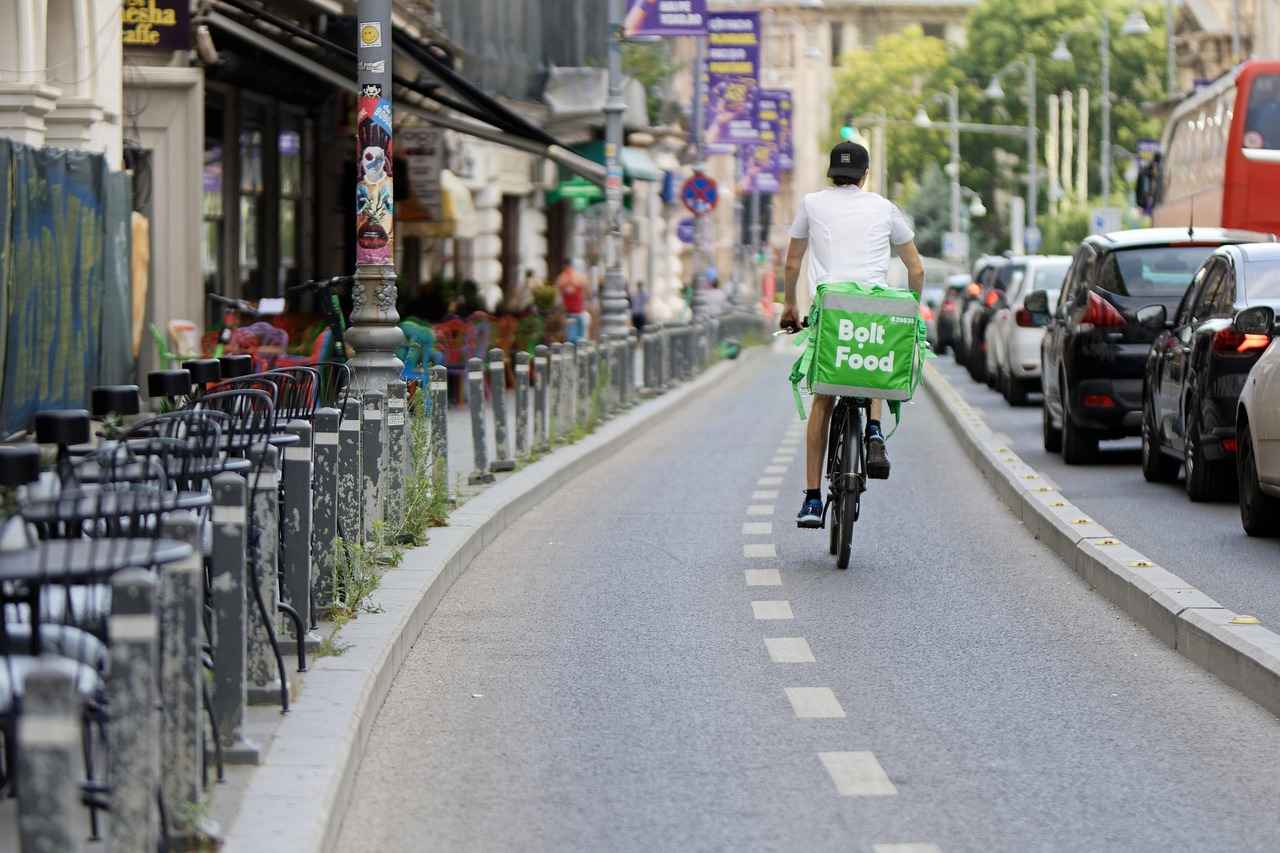
Conclusion: Embracing Safe E-Biking Practices
Riding an electric bike in busy city traffic can be both exhilarating and daunting. To truly enjoy the benefits of e-bikes while ensuring personal safety and the safety of others, it is essential to adhere to specific guidelines. These practices not only enhance the riding experience but also promote a culture of safety among all road users.
Understanding the Importance of Safety
Electric bikes offer a unique blend of convenience and speed, making them a popular choice for urban commuting. However, this speed necessitates a heightened awareness of surroundings. Riders must be vigilant and prepared to react swiftly to changing traffic conditions.
Essential Guidelines for Safe Riding
- Wear Protective Gear: Always wear a helmet and consider additional protective gear such as knee and elbow pads. This significantly reduces the risk of injury in case of an accident.
- Be Aware of Your Surroundings: Constantly scan the environment for potential hazards, including pedestrians, vehicles, and road conditions.
- Follow Traffic Rules: Adhere to all traffic laws, including stop signs and traffic lights. This not only keeps you safe but also sets a positive example for other riders.
- Signal Your Intentions: Use hand signals to communicate with drivers and other cyclists. This helps to prevent misunderstandings and accidents.
- Stay Visible: Equip your e-bike with lights and wear bright clothing, especially during low-light conditions, to enhance your visibility.
Planning Your Ride
Before setting out, plan your route to avoid high-traffic areas whenever possible. Utilize bike lanes and quieter streets to minimize risks. This strategic planning can significantly enhance your safety while allowing for a more enjoyable ride.
Conclusion: Prioritizing Safety for a Better Experience
By following these comprehensive guidelines, riders can not only enjoy the numerous advantages that electric bikes offer but also contribute to a safer environment for everyone on the road. Embracing safe riding practices is essential for ensuring that both the rider and others remain unharmed in the hustle and bustle of city traffic.
Frequently Asked Questions
- What safety gear should I wear while riding an electric bike?
It’s essential to wear a helmet, reflective clothing, and use lights to enhance your visibility. Think of it like putting on armor before heading into battle; it keeps you safe and makes you more noticeable to drivers!
- Are there specific traffic laws for electric bikes?
Yes, traffic laws vary by city. It’s crucial to familiarize yourself with local regulations to ensure compliance and stay safe. Just like knowing the rules of a game, understanding the laws helps you navigate the roads confidently.
- How can I plan a safe route for my e-bike ride?
Opt for bike lanes and quieter streets whenever possible to minimize interactions with cars. Think of it as choosing a peaceful path through a forest instead of a busy highway – it makes for a much more enjoyable ride!
- What should I do if I encounter bad weather while riding?
Adjust your riding style to suit the conditions. In rain or wind, slow down and maintain a safe distance from other vehicles. It’s like driving a car; you wouldn’t speed through a storm, right?
- How can I stay visible to drivers?
Use lights, wear bright clothing, and make eye contact with drivers whenever possible. Imagine being a lighthouse in the fog; the more visible you are, the safer you’ll be!
- What should I do in case of an emergency?
Always carry a basic first-aid kit and know some first-aid procedures. Being prepared is like having a safety net; it can make all the difference in a tough situation!
